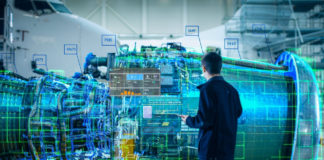
In recent years, the traditional office setup has significantly evolved to cater to modern-day work demands. As we step into 2024, the trend continues with a shift towards creating more worker-friendly environments. This change is not merely a nod to aesthetic appeal but a substantial move to foster productivity, well-being, and collaboration among employees.
Through a blend of open layouts, hybrid workspaces, advanced technology integrations, adaptable areas, and biophilic designs, the new-age office is now poised to offer a conducive and engaging workspace for all.
Embracing Open Plan Spaces
Open plan spaces have been lauded for their ability to facilitate free movement, fostering a sense of openness and accessibility among employees. Such designs eliminate the barriers that traditional cubicles or enclosed offices may pose, promoting an environment of inclusivity and interaction. A crucial aspect of making open spaces work is ensuring adequate desk spacing.
By adhering to guidelines such as a minimum of 60cm distance between the desk edge and the back of a user’s chair, and a 200cm distance between desks placed back-to-back, the important dimensions in your office layout can be maintained. This arrangement not only adheres to safety standards but significantly contributes to creating a comfortable working environment where individuals can move and interact freely.
Hybrid Workspaces: The Best of Both Worlds
The modern workspace is morphing, with the changes towards hybrid workspaces standing at the forefront, blending the conventional office setting with the freedom of remote working to foster a better work/life balance. This model allows employees to choose between working from home or at the office, accommodating personal preferences and circumstances.
A notable feature of hybrid workspaces is the introduction of desk booking systems. These systems enable employees to reserve a desk for the days they choose to work on-site, ensuring space availability. This level of flexibility is not only a nod to individual preferences but also a step towards creating a more adaptable and responsive working environment.
Integrating Advanced Technology
The infusion of advanced technology into office spaces significantly elevates collaboration and streamlines work processes. Tools like interactive whiteboards foster real-time brainstorming and collective problem-solving, bringing a dynamic element to meetings. Similarly, adaptable lighting systems can be tailored to the time of day or the task at hand, creating a conducive atmosphere for focused work or creative discussions.
These technological advancements are not merely about modernising the workspace; they play a pivotal role in enhancing the overall work experience, making daily tasks more manageable and collaborative activities more engaging. Through such integrations, offices become more adaptable and conducive to varying work styles and requirements.
Incorporating Biophilic Design
Biophilic design, embodying nature within the workspace, goes beyond aesthetic appeal, unlocking a wide range of benefits for its occupants. This design philosophy integrates natural elements like plants, water, and sunlight, cultivating a more organic and serene environment. The connection to nature can significantly uplift well-being, reducing stress and enhancing mental clarity.
Moreover, the tranquil ambience fostered by biophilic design can boost productivity, as employees find themselves in a rejuvenating, rather than draining, environment. The innate human affinity towards nature, when acknowledged in office design, sets a foundation for improved health and heightened efficiency, making biophilic design a worthy investment for modern office spaces.
Adaptable Areas for Collaboration
Adaptable areas within the office landscape are game-changers, sparking spontaneous collaboration without the rigidity of booking meeting rooms. These spaces, often designed with movable furnishings and partitions, allow teams to come together organically, fostering a culture of open communication and teamwork.
Moreover, the same areas can morph into private nooks when required, providing seclusion for focused work or sensitive discussions. The versatility of adaptable areas meets the diverse needs of a modern workforce, catering to both collaborative and private work needs. This fluidity in space usage significantly contributes to a nurturing and flexible work environment.

















